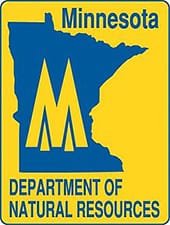

St. Paul, MN -(AmmoLand.com)- The Minnesota Department of Natural Resources Parks and Trails Division will celebrate the importance of Legacy Amendment funding to prairie restoration in state parks, 10 a.m. to 4 p.m., on Saturday, Sept. 26 at Maplewood State Park in Pelican Rapids.
The event is in conjunction with the annual Friends of Maplewood State Park Leaf Days celebration. The Legacy Amendment event will include a ribbon-cutting ceremony, a self-guided prairie restoration tour and demonstrations.
The 10 a.m. ribbon-cutting ceremony will take place at a new prairie restoration site adjacent to the Josh Hanson Memorial Picnic Shelter. It will include remarks by Parks and Trails Division restoration staff and Don DelGreco, Maplewood State Park manager.
Following the ribbon-cutting, visitors can take a self-guided prairie restoration tour while they enjoy a scenic fall color drive through the park. There will be demonstrations at various sites along the way, and site hosts will be available from 11 a.m. to 4 p.m. to answer questions.
Prairie restoration in Minnesota state parks is made possible by the Parks and Trails Fund, created after voters approved the Clean Water, Land and Legacy Amendment in November 2008. The Parks and Trails Fund receives 14.25 percent of the three-eighths percent sales tax revenue that may only be spent to support parks and trails of regional or statewide significance.
Since the initiation of Legacy funding in 2009, the DNR’s Parks and Trails Division has restored over 6,000 acres of prairies and forest at a cost of about $9 million.
“Legacy Amendment funding has been a key factor in supporting prairie restoration in Minnesota state parks,” said Erika Rivers, Parks and Trails Division director. “Come see how five years of Legacy funding has allowed us to restore native prairie plant, wildlife and pollinator habitat in Maplewood State Park.”
The tallgrass prairie once covered about one-third of Minnesota (about 18 million acres), according to the Minnesota Prairie Conservation Plan, a 25-year strategy for accelerating conservation of native prairie, other grasslands, wetlands and shallow lakes in the state.
Over the last 150 years, much of Minnesota’s prairie land has been converted to agricultural use. As a result, bison, elk, badgers and other key species that depend on prairie habitat for survival have declined, or in some cases, disappeared from the state.
Less than 2 percent of Minnesota’s native prairie land remains (approximately 235,076 acres in 71 counties). Northwestern Minnesota holds areas with at least some of features of a functioning prairie system.
“In the northwest region, Legacy funding has helped restoration and enhancement of several thousand acres of prairie, as well as buffering and improving some of the best remnants of native prairie in the state,” said Cindy Lueth, Parks and Trails Division northwest region resource specialist. “These restorations are important to increase habitat for native pollinators, as well as grassland-loving species of birds and mammals.”
Leaf Day’s activities at Maplewood State Park will continue from 10 a.m. to 4 p.m. Sunday, Sept. 27; Saturday, Oct. 3; and Sunday, Oct. 4.

For more information on the Legacy Amendment projects and funding, visit www.mndnr.gov/legacy. For more information on Maplewood State Park, visit www.mndnr.gov/state_parks.
To view the Minnesota Prairie Conservation Plan, visit www.mndnr.gov/prairieplan
About Minnesota Department of Natural Resources:
The mission of the Minnesota Department of Natural Resources (MNDNR) is to work with citizens to conserve and manage the state’s natural resources, to provide outdoor recreation opportunities, and to provide for commercial uses of natural resources in a way that creates a sustainable quality of life.
For more information, visit: www.dnr.state.mn.us.
